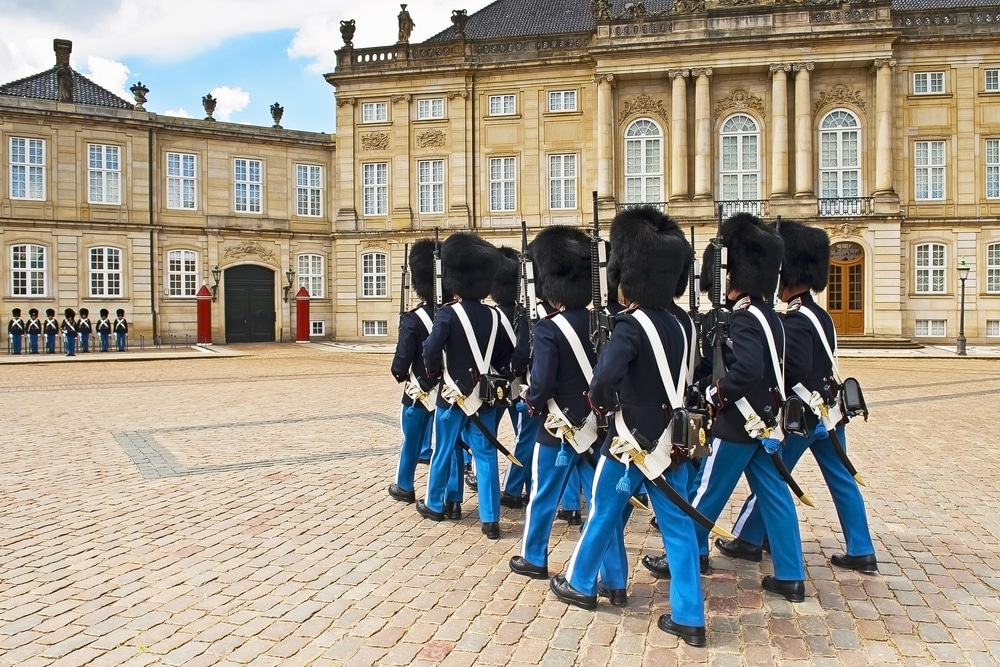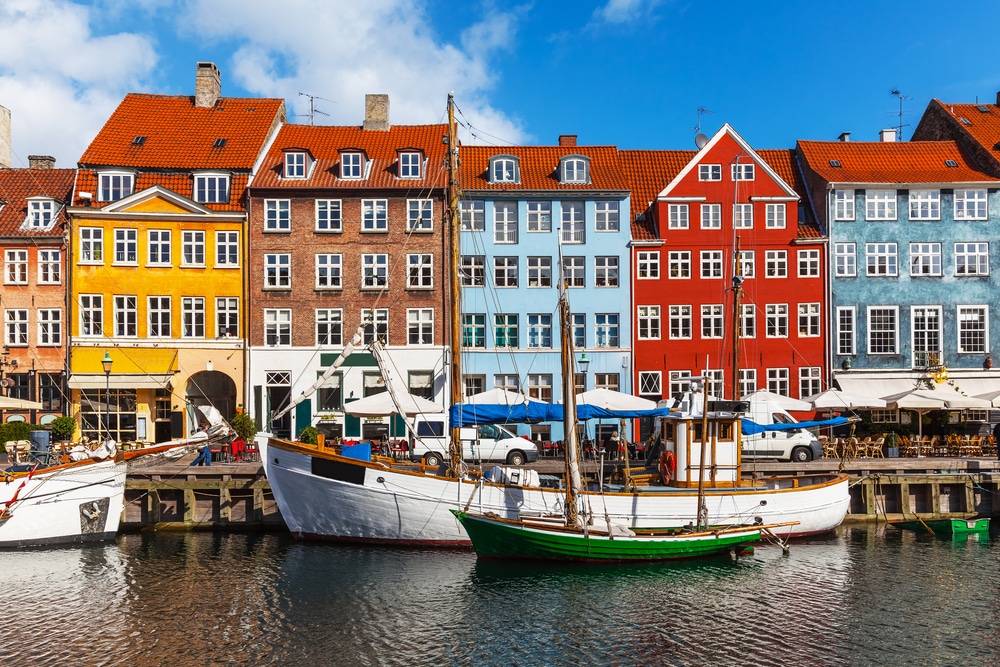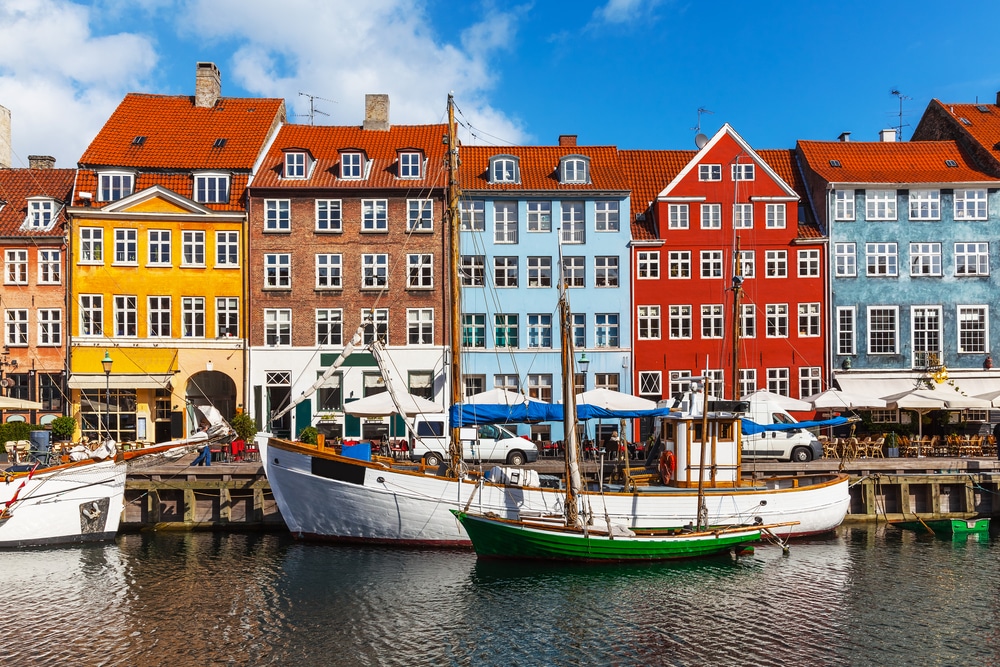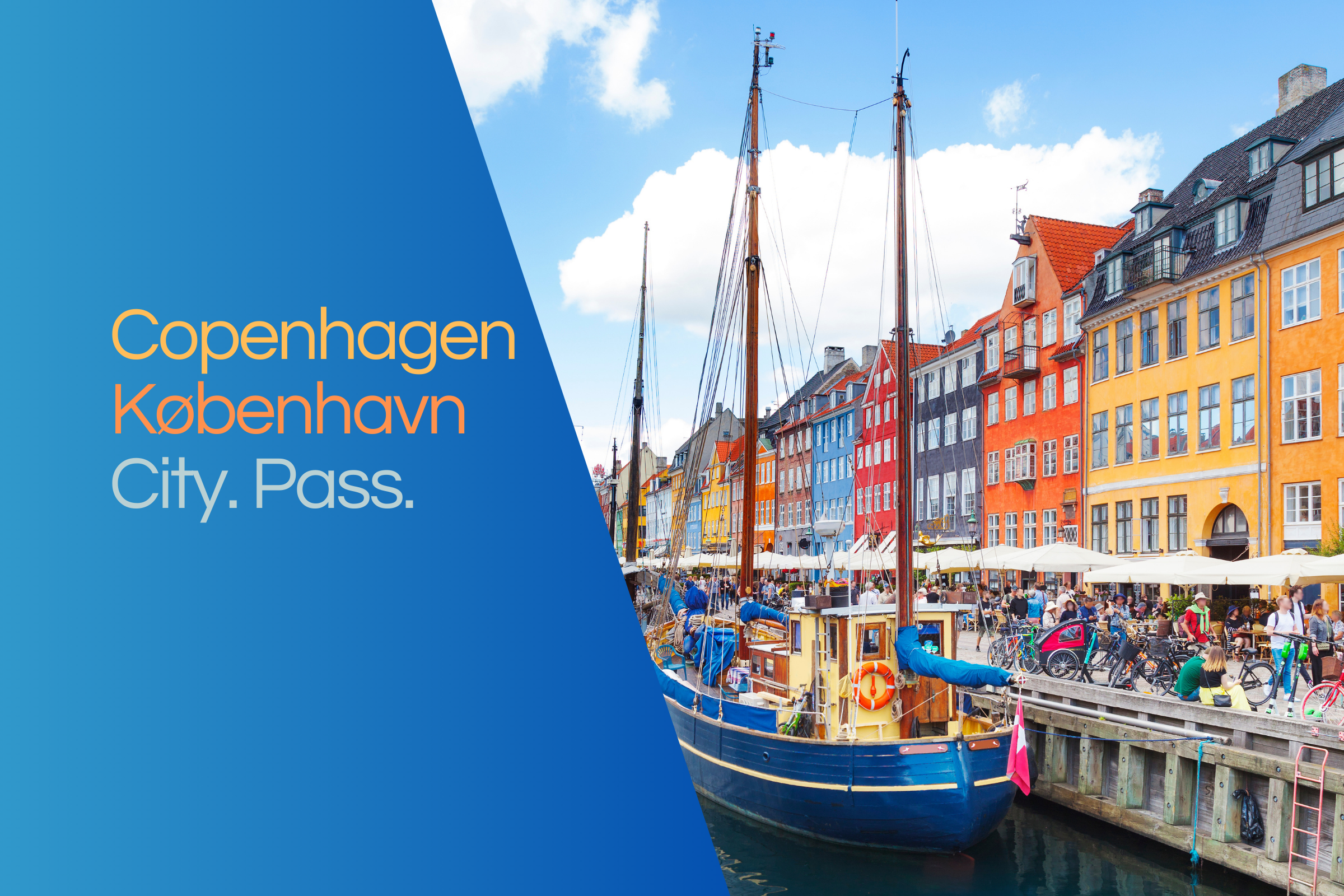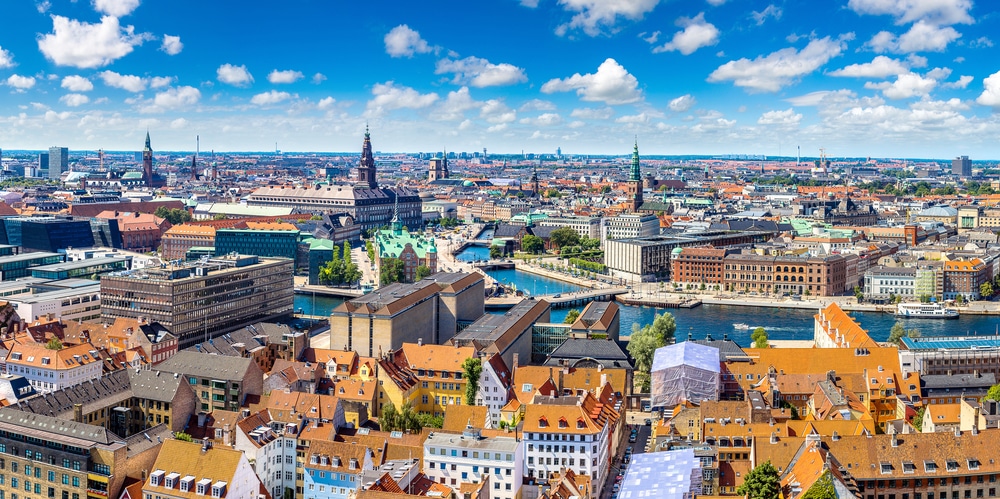- Home ›
- Denmark ›
- Copenhagen
The Danish royal house has its home in the four exactly identical rococo palaces. Every day at 12 noon, the famous ceremonial changing of the guard takes place here, which is not to be missed.
Amalienborg Palace
The first Amalienborg Palace was completed in 1673 and was a pleasure palace of Frederick III King of Denmark and Norway for his wife Sophie Amalie of Brunswick-Lüneburg. Sophie Amalie, who was known for her lavish lifestyle despite the tight state finances at the time, lived there with a lavish court and court ceremonial until her death in 1680. She was thus a typical representative of the aboslutist early Baroque zeitgeist prevalent among the nobility at the time. In 1689 the building burned down completely, leaving a wasteland. Today, the new Amalienborg Palace consists of four palace buildings, is the Copenhagen city residence of the Danish Queen Margrethe II and one of the main attractions of the Danish capital.
The construction of the four palaces under Frederik V.
The site of today's Amalienborg Palace is located on the waterfront of the narrow strait that separates the island of Amager from the mainland, making it a convenient and central building site for the Danish capital. In the middle of the 17th century King Frederik V. had the plan to build a representative parade ground with a visual axis to the prominent marble church of the city. It was part of a large-scale project to build a new baroque city district based on the French model, which would also bear the king's name: Frederikstadt. With the wasteland of the burnt down Amalienborg Palace, he found suitable building land for his project, but he lacked the necessary financial means. Therefore, he donated the fallow land to four rich noblemen, but under the condition to build four rococo palaces according to the plans of the court architect Nikolei Eigtved. Thus, the present palace ensemble was created around an octagonal square, the centre of which is adorned by an equestrian monument to King Frederik V. The palaces are also named after the four families who won the bid at that time: Palais Schack, Palais Moltke, Palais Brockdorff and Palais Levetzau.
The function of the different palaces today
Palais Schack and Palais Brockdorff are today residences of the royal family and not accessible to tourists. They mainly serve as winter residences, as the Queen moves her residence to Frederiksborg Palace, some 30 kilometres away, during the summer. The Palais Moltke accommodates some working rooms and also serves as a guest house of the royal family, but it can be partly visited during guided tours when the royal family is absent. The Palais is best known for the Knights' Hall or Great Hall, where the Queen regularly receives high-ranking guests and which is considered one of the finest Rococo creations. This hall can also be visited, especially in summer. On the ground floor of Palais Levetzau there is a museum dedicated to the history and everyday life of the Danish royal family: Beside two royal workrooms, different special exhibitions alternate here, for example to the dresses of the queen or royal correspondence.
The sight at noon: the changing of the guards
A well-known spectacle of Amalienborg is the daily changing of the guards, which can also be followed outside the grounds. The royal bodyguard marches at 11.30 a.m. from Rosenborg Palace through the city to Amalienborg in order to change the guards there at 12.00 p.m.. The most spectacular change of guards is when the Queen herself is in the building, recognisable by the waving of the Danish national flag over the castle. During this "change of royal guard", dozens of soldiers in parade uniform and accompanied by a corps of musicians march across the octagonal central square. If only a crown prince, the prince consort or the queen's sister, Princess Benedikte, is in the castle, the so-called "change of lieutenant guard" takes place with a smaller regiment. If none of these royal personalities is present, only the "palace guard change" takes place with a few soldiers and without music. It is therefore worthwhile to inform oneself about the presence of the royal family before starting the visit to Amalienborg. Thereby, one possibly gets the possibility to even have a look at the passing queen herself.
